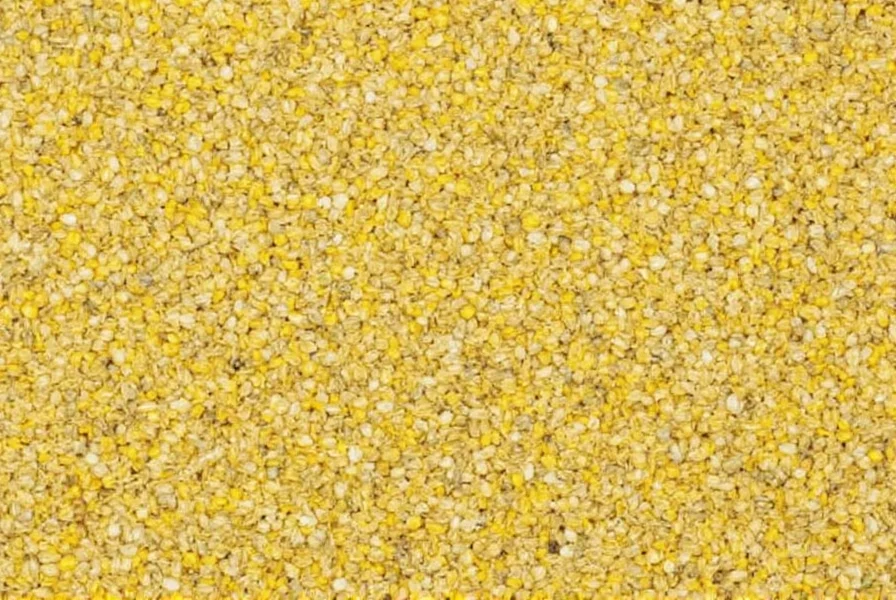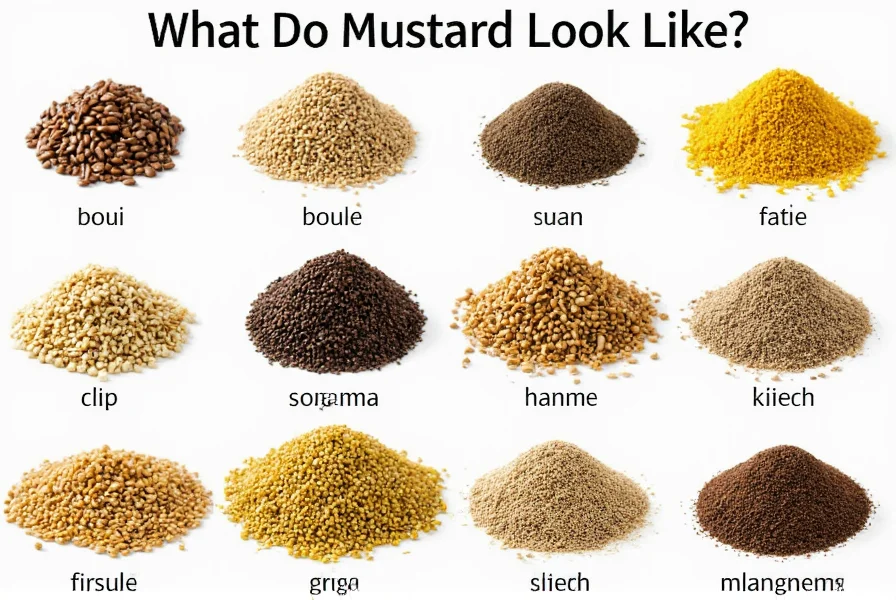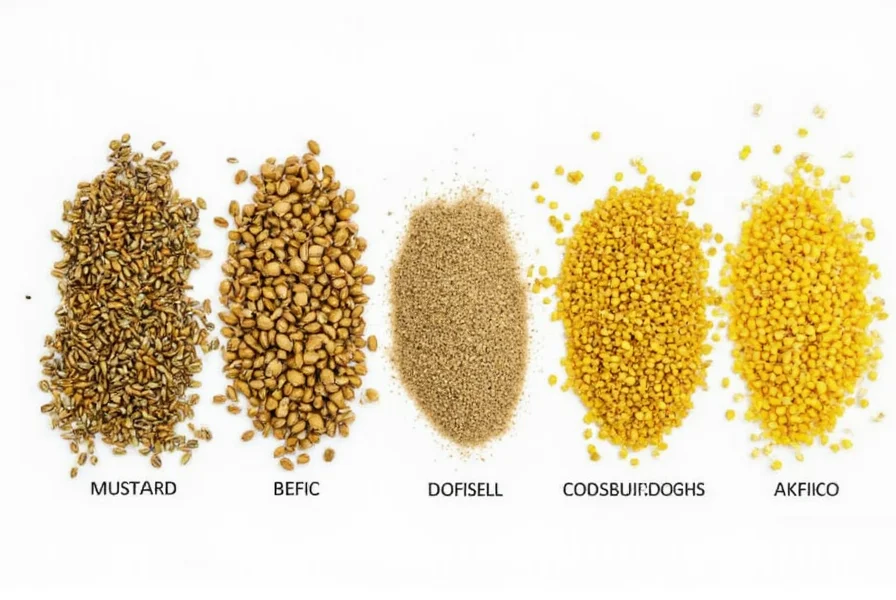Understanding the visual characteristics of mustard seeds is essential for gardeners, cooks, and foragers. These tiny seeds come in three primary varieties, each with distinctive appearance and uses. Whether you're trying to identify seeds in your garden or select the right type for cooking, recognizing their physical properties helps ensure proper identification and usage.
Visual Characteristics of Mustard Seeds by Variety
Mustard seeds fall into three main categories, each with unique visual traits that help with identification:
Yellow Mustard Seeds (Sinapis alba)
Often called "white" mustard seeds despite their actual color, these are the largest of the three varieties at 1.5-2mm in diameter. They have a smooth, round shape and range from pale yellow to light tan. When held to light, you'll notice they're somewhat translucent with a matte finish. These seeds maintain their shape well when dry and have a mild, slightly nutty aroma.

Brown Mustard Seeds (Brassica juncea)
Slightly smaller at 1-1.5mm, brown mustard seeds have an oval shape with a pointed end. Their color ranges from reddish-brown to deep chocolate brown. The surface shows fine ridges when viewed under magnification, giving them a slightly textured appearance compared to yellow varieties. When crushed, they release a stronger, more pungent aroma than yellow seeds.
Black Mustard Seeds (Brassica nigra)
The smallest variety at approximately 1mm, black mustard seeds are nearly spherical with a deep brown to true black color. They have the most pronounced ridges on their surface, visible even to the naked eye as tiny lines across the seed. Despite their name, they're rarely pure black but rather a very dark brown that appears black. These seeds have the strongest aroma and heat when crushed.

How to Identify Mustard Seeds in Different Contexts
Recognizing mustard seeds requires understanding how they appear in various situations:
In Seed Pods
Mustard plants produce seeds in elongated pods that split open when mature. The seeds sit in neat rows inside the pod, with color visible through the thin pod walls as they mature. Yellow mustard pods contain pale seeds, while brown and black varieties show darker hues through their pods.
Whole vs. Ground
Whole mustard seeds maintain their distinct shape and color, while ground seeds become a fine powder. Yellow mustard powder is pale yellow, brown mustard powder is medium brown, and black mustard powder is dark brown. The texture changes from hard and crunchy when whole to smooth when properly ground.
Comparing Mustard Seeds to Similar-Looking Seeds
Several seeds resemble mustard seeds, making proper identification important:
| Seed Type | Size | Color | Shape | How to Distinguish from Mustard |
|---|---|---|---|---|
| Mustard (Yellow) | 1.5-2mm | Pale yellow to light tan | Rounded | Naturally pungent aroma when crushed |
| Rapeseed | 1-1.5mm | Dark brown to black | Oval with pointed end | Milder aroma, used for canola oil production |
| Nigella (Black Cumin) | 2-3mm | Dark gray to black | Triangular with凹陷 center | Larger size, distinctive triangular shape |
| Sesame | 3-4mm | Cream to dark brown | Oval, flattened | Larger size, flatter shape, different texture |
Practical Identification Tips for Mustard Seeds
When trying to identify mustard seeds, consider these practical methods:
- Size comparison: Place seeds next to a ruler or common object (a standard pencil lead is 2mm)
- Water test: Mustard seeds will float briefly then sink, while some similar seeds behave differently
- Aroma test: Crush a few seeds between fingers - mustard releases a distinctive pungent smell
- Color consistency: Mustard seeds of the same variety maintain consistent color within a batch
Common Misidentifications of Mustard Seeds
Many people confuse mustard seeds with other small seeds. The most frequent misidentifications include:
Nigella seeds (often called black cumin) are frequently mistaken for black mustard seeds. While both are small and dark, nigella seeds are larger (2-3mm), have a triangular shape with a distinctive depression in the center, and lack the pungent aroma of mustard. They also have a more oregano-like flavor rather than the sharp heat of mustard.
Sesame seeds are another common confusion point, especially with yellow mustard seeds. Sesame seeds are larger (3-4mm), flatter, and have a more elongated oval shape. They also lack the characteristic pungency of mustard seeds and have a nuttier, milder flavor profile.
Using Mustard Seeds in Cooking and Gardening
Understanding what mustard seeds look like helps in both culinary and gardening contexts. In cooking, the visual identification ensures you're using the right variety for your recipe - yellow for milder flavors like ballpark mustard, brown for Dijon-style preparations, and black for the strongest heat in Indian cuisine.
Gardeners benefit from knowing what mustard seeds look like to properly harvest at the right maturity stage. Seeds should be collected when pods turn brown and begin to dry but before they split open. Properly identified seeds ensure you're planting the correct mustard variety for cover cropping, pest control, or harvest.
Frequently Asked Questions About Mustard Seed Appearance
What's the difference between yellow and white mustard seeds?
Yellow and "white" mustard seeds are the same variety (Sinapis alba). The term "white" is misleading as they're actually pale yellow to light tan. They're larger than other varieties at 1.5-2mm and have a round shape with a mild flavor profile compared to brown or black mustard seeds.
How can you tell if mustard seeds have gone bad by looking at them?
Fresh mustard seeds maintain their characteristic color and dry texture. Signs they've gone bad include dark spots, mold growth (appearing as fuzzy white or green patches), or an oily sheen on the surface. Properly stored seeds should remain hard and dry, not soft or clumped together.
Do mustard seeds change color when cooked?
Mustard seeds don't significantly change color when dry-roasted, though they may darken slightly. When used in wet preparations like mustard paste, yellow seeds create a pale yellow condiment, brown seeds produce medium brown mustard, and black seeds yield a darker brown preparation. The seeds themselves remain visible as small dark specks in prepared mustards.
Are there any visual differences between organic and conventional mustard seeds?
No, there are no visual differences between organic and conventionally grown mustard seeds. Both look identical in size, shape, and color. The only way to verify organic status is through proper certification labeling, not by visual inspection of the seeds themselves.
How do mustard seeds look when they start to sprout?
When mustard seeds begin sprouting, they first swell and may show a small white root emerging from one end. Within 24-48 hours, the root grows longer while a small shoot develops from the opposite end. The seed coat often remains attached to the growing sprout, appearing as a small cap on the emerging plant.











 浙公网安备
33010002000092号
浙公网安备
33010002000092号 浙B2-20120091-4
浙B2-20120091-4